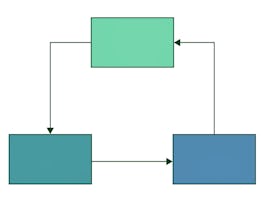The way that software components — subroutines, classes, functions, etc. — are arranged, and the interactions between them, is called architecture. In this course you will study the ways these architectures are represented, both in UML and other visual tools. We will introduce the most common architectures, their qualities, and tradeoffs. We will talk about how architectures are evaluated, what makes a good architecture, and an architecture can be improved. We'll also talk about how the architecture touches on the process of software development.


Software Architecture
This course is part of Software Design and Architecture Specialization
Taught in English
Some content may not be translated

Instructor: Kenny Wong
66,729 already enrolled
Included with 
Course
(884 reviews)
93%
Details to know

Add to your LinkedIn profile
4 quizzes
Course
(884 reviews)
93%
See how employees at top companies are mastering in-demand skills

Build your subject-matter expertise
- Learn new concepts from industry experts
- Gain a foundational understanding of a subject or tool
- Develop job-relevant skills with hands-on projects
- Earn a shareable career certificate


Earn a career certificate
Add this credential to your LinkedIn profile, resume, or CV
Share it on social media and in your performance review

There are 4 modules in this course
In this module you will learn about software architecture. You will learn why architecture is important, what perspectives need to be considered, and how to communicate architecture using UML.
What's included
6 videos8 readings1 quiz2 peer reviews
Software comes in all shapes and sizes. The architecture you choose will affect every part of your software, from its security and efficiency, to its modularity and maintainability. In this module we will examine the different architectures that you have to choose from to shape your software.
What's included
9 videos3 readings1 quiz
The architecture is the most fundamental aspect of software. You will learn how development teams describe architectures, plan successful architectures based on quality attributes, and evaluate the resulting architecture. You will also learn how architecture relates to organization structure and even product planning!
What's included
4 videos1 quiz
Now, in the final module of the course, you will evaluate the proposed architecture to extend the functionality of the example Android code base.
What's included
4 readings1 quiz1 peer review
Instructor

Offered by
Recommended if you're interested in Software Development

University of Alberta

University of Alberta

University of Alberta

University of Alberta
Why people choose Coursera for their career




Learner reviews
Showing 3 of 884
884 reviews
- 5 stars
68.20%
- 4 stars
21.08%
- 3 stars
5.74%
- 2 stars
2.25%
- 1 star
2.70%
New to Software Development? Start here.

Open new doors with Coursera Plus
Unlimited access to 7,000+ world-class courses, hands-on projects, and job-ready certificate programs - all included in your subscription
Advance your career with an online degree
Earn a degree from world-class universities - 100% online
Join over 3,400 global companies that choose Coursera for Business
Upskill your employees to excel in the digital economy
Frequently asked questions
Access to lectures and assignments depends on your type of enrollment. If you take a course in audit mode, you will be able to see most course materials for free. To access graded assignments and to earn a Certificate, you will need to purchase the Certificate experience, during or after your audit. If you don't see the audit option:
The course may not offer an audit option. You can try a Free Trial instead, or apply for Financial Aid.
The course may offer 'Full Course, No Certificate' instead. This option lets you see all course materials, submit required assessments, and get a final grade. This also means that you will not be able to purchase a Certificate experience.
When you enroll in the course, you get access to all of the courses in the Specialization, and you earn a certificate when you complete the work. Your electronic Certificate will be added to your Accomplishments page - from there, you can print your Certificate or add it to your LinkedIn profile. If you only want to read and view the course content, you can audit the course for free.
If you subscribed, you get a 7-day free trial during which you can cancel at no penalty. After that, we don’t give refunds, but you can cancel your subscription at any time. See our full refund policy.

